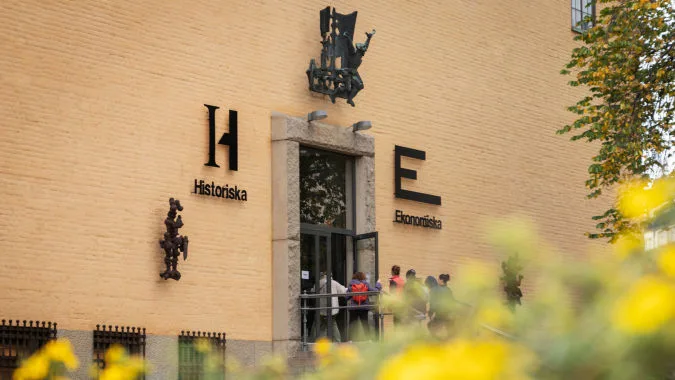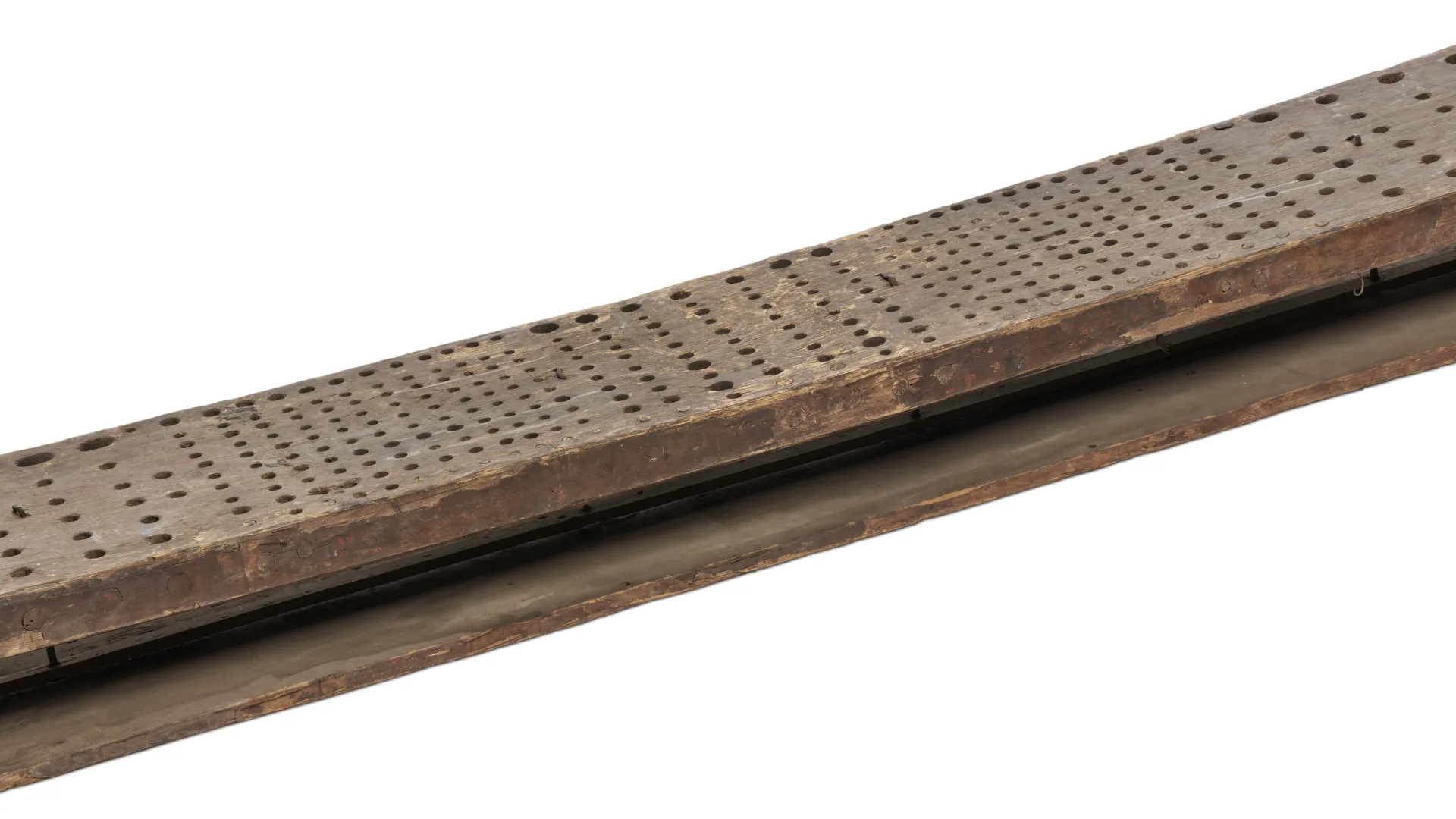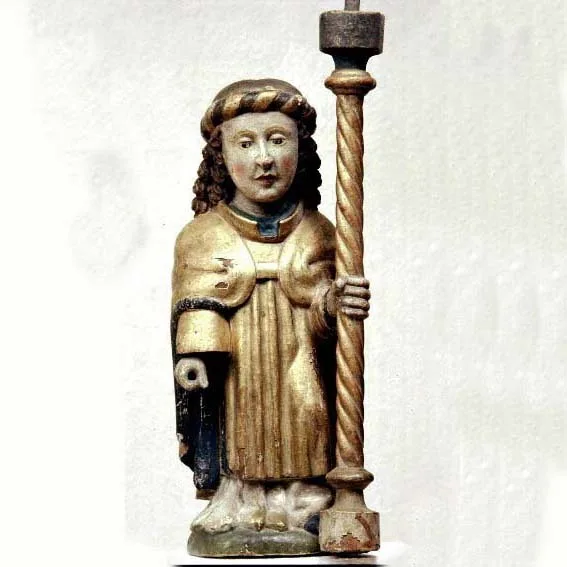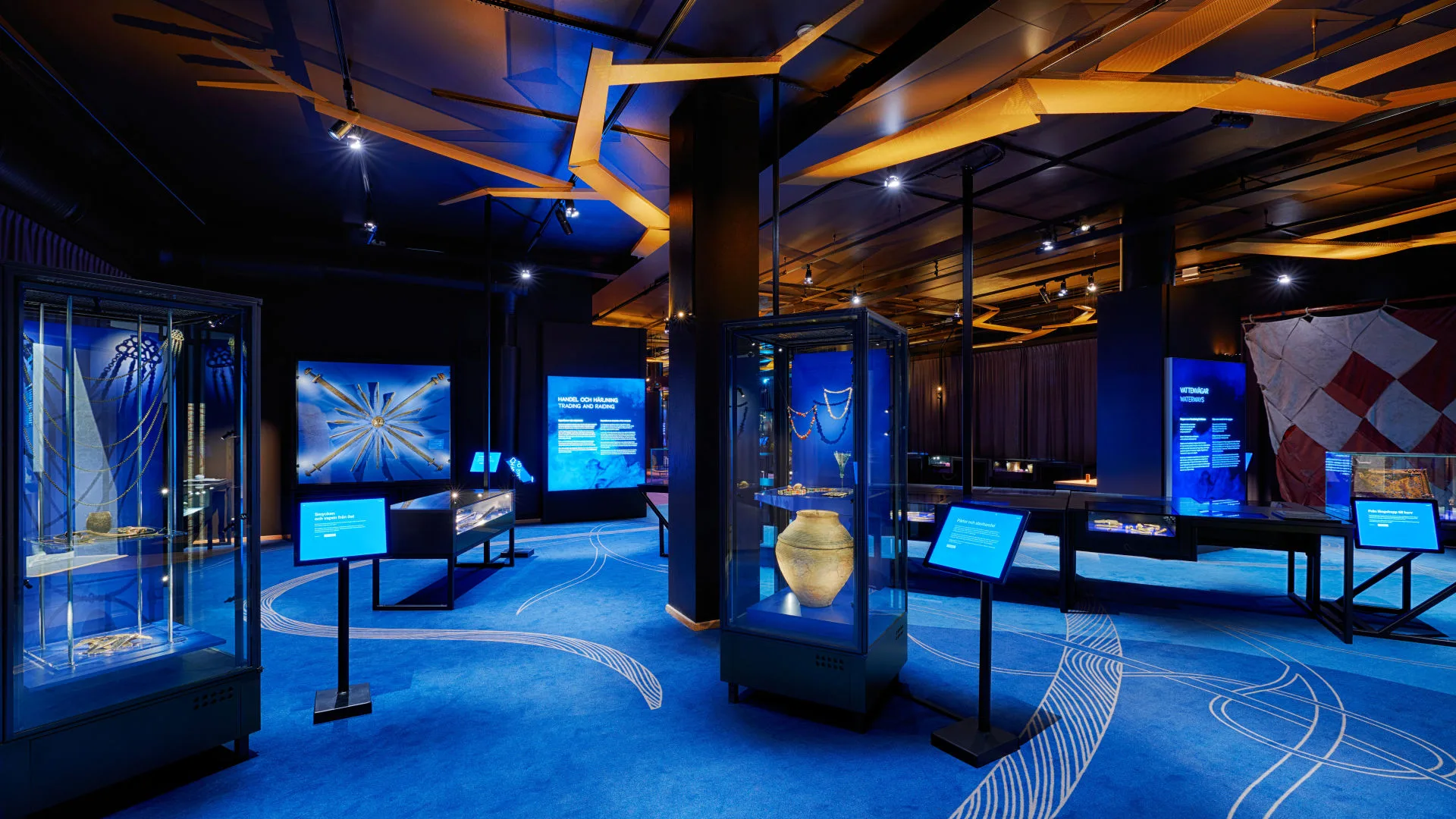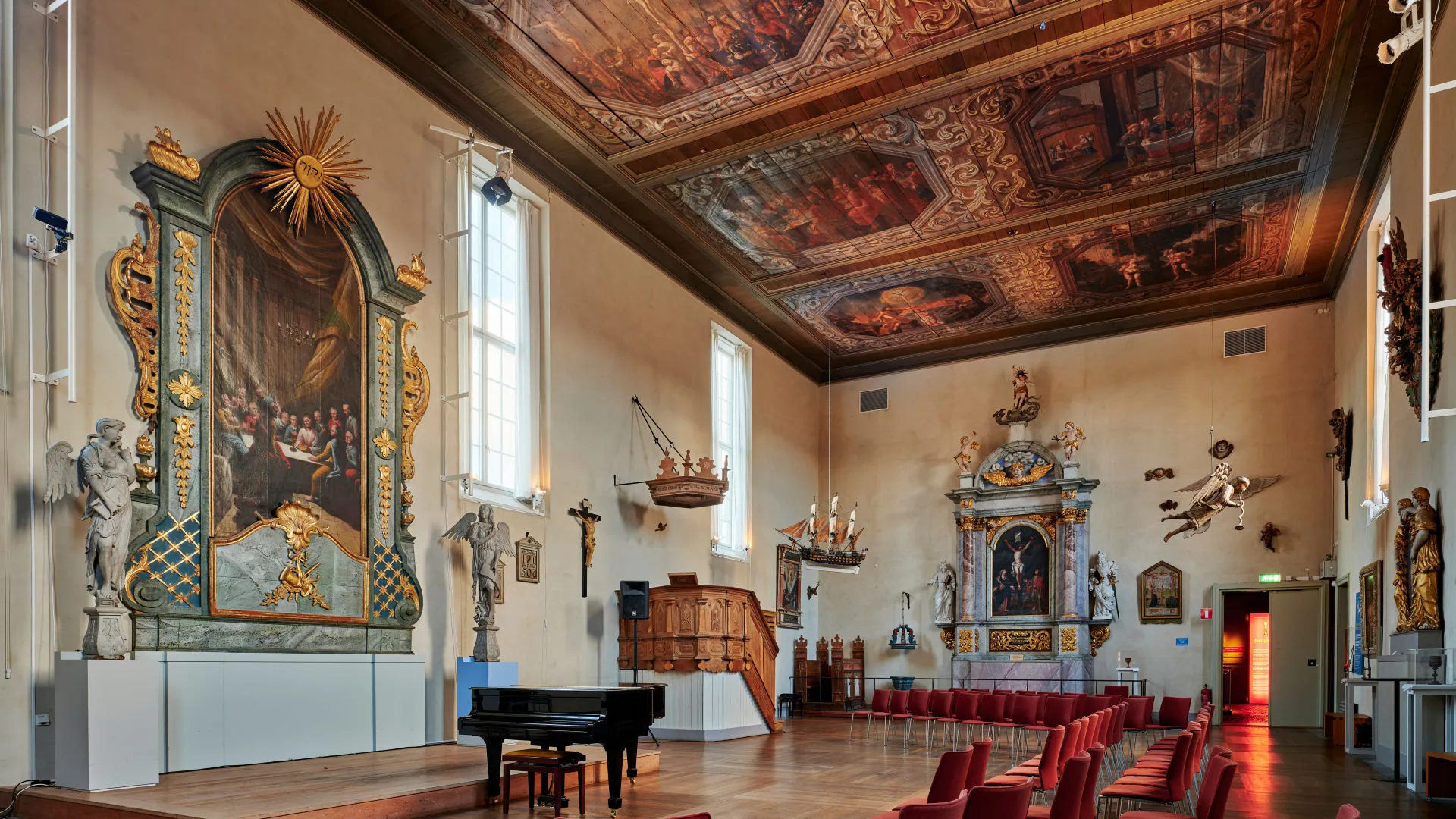
Baroque Hall
In the Baroque Hall you will find ecclesiastical art from around 1530 to 1800. The objects represent styles that in art history are called Renaissance, Baroque – which has given the room its name – and Neoclassicism.
The room is decorated as a church hall with a large reredos on one side and a stand with an organ on the other. Here you will find a pulpit, a priest bench, funeral ornaments and a beautifully painted baptismal font, just like in a real church.
The painted ceiling
The Baroque Hall’s painted wooden ceiling is from the end of the 17th century. Originally it was in the Old Town Church in Eksjö, Sweden, but was larger then. When the church was demolished in the 1880s, the congregation donated the ceiling to the Swedish History Museum.
There is a monogram of the initials of Queen Hedvig Eleonora (Queen of Sweden 1654–1660) in the middle of the ceiling. The queen was interested in art and architecture and donated a lot of art to churches throughout Sweden.
The ceiling paintings from 1687 were painted by Jöran Künckel, who was born in Stockholm and worked in Lübeck in the 1660s. The paintings show scenes from the Bible according to the typological interpretation model. This can be described as saying that the Old Testament of the Bible predicted, and is linked to, the New Testament.

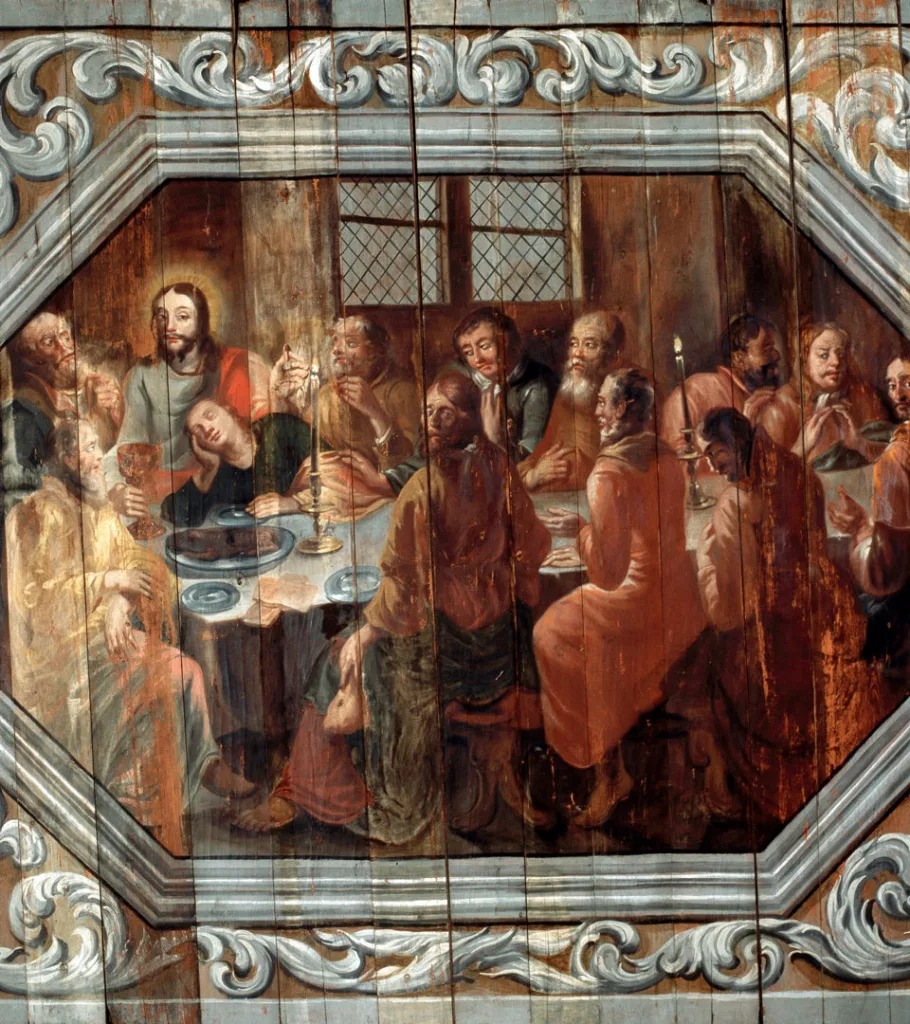
Ceiling paintings and sculpture in the Baroque Hall. Photo: Ola Myrin, The Swedish History Museum/SHM (CC BY 4.0)
The altar
The altar from Tolfta Church in Uppland is a good example of a baroque altar from a Swedish country church. It is architecturally constructed of beams and strong columns using capitals and bases and covered with gilded, powerful, and almost overblown acanthus ornamentation. The acanthus is a leafy thistle plant from the Mediterranean that is commonly found in the Renaissance, Baroque and Neoclassical styles.
Angel heads with wings but no body, known as angelic flights, hover and strive upwards. The main motif is an oil painting of the crucifixion. On either side of the columns, Peter stands with a book and Paul with a sword and a book. Peter originally had a key in his hand that has been lost at some point. Paul’s sword reminds him that he was beheaded, Peter’s key is the one used to open the gates of the Kingdom of Heaven.
At the top there is a crown figure. It looks rather small from floor level but is actually over a meter high. It shows how the resurrected Christ, with radiant halo and his hand raised in a blessing, tramples on the devil who has adopted the shape of a dragon. The motif originated in the Bible Old Testament, in Psalm 91 Verse 13: “Over lions and snakes you go forth, you trample on beasts and dragons.”
The organ
In the Baroque Hall you can see a large organ. The organ housing is missing its pipes and the manual (keyboard), but the bellows inside are preserved. The coat of arms of the Rosenstjern and Lilliehok families are painted on the front. On the sides there is a painting of King David playing the harp, as well as a female figure playing the drum. It is possible that the woman represents Saint Cecilia, the patron saint of music.
What to know before your visit
- Admission: Free admission for children and youth aged 0–18. See admission fees for adults.
- Cloakroom: The cloakroom is located on the entrance floor. Here you will find lockers with locks. Small bags are allowed inside the exhibition areas. If you want to store larger suitcases, you can borrow a key at the information desk for the larger lockers in the cloakroom.
- Strollers: You are allowed to bring strollers inside the museum, except in the Gold Room.
Accessibility
We strive to continuously improve our accessibility to make it easy to visit us, both on-site and digitally. There are elevators to all floors, accessible toilets on all three levels, and disabled parking close to the entrance. Guide dogs are welcome.

